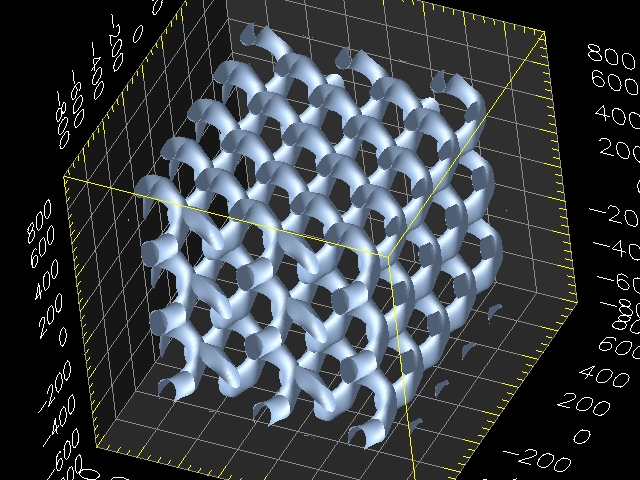Locally Resonant Sonic Material (LRSM) is designed to reject sound waves at a pre-specified range of frequencies by local resonance. The physical origin of perfect reflection of sound wave in LRSM is very different from conventional phononic crystals (or sonic crystals). Conventional phononic crystals operate under the principle of Bragg reflection, which dictates that the thickness of the slab must be a few times the wavelength of sound. This makes Bragg-reflection based band gap material too bulky for low frequency applications since low frequency sound has a long wavelength. Our material, on the other hand, has sonic band gaps by virtue of arrays of local resonators (see Fig. 1 (B) for the LRSM of the first generation). There are several advantages of using LRSMs to reject sound. Firstly, periodicity is not required (in contrast to Bragg reflection). Secondly, the resonance frequency has nothing to do with the lattice constant, and hence the slab can in principle be much thinner than the wavelength of the sound it is supposed to shield.
Category: Wave Functional Materials
Multiple scattering forces and “photonic clusters”
While matter can alter the propagation of light (e.g., scattering, diffraction, photonic crystals, etc.), light can also exert forces on matter (i.e. the Lorentz force). The most well-known type of light-induced force is probably radiation pressure, which originates from the transfer of momentum during the scattering and absorption of photons by matter. The gradient force is also a very important light induced force, where small particles are attracted toward the high intensity region. With the lasers that are available today, light induced forces can be applied to, and are particularly suited to the manipulation of small systems with size on the micron-scale or below.
We investigate the interaction of a cluster of dielectric particles under the illumination of a laser beam; each particle in the cluster scatters light and thus exerts forces on each other. This phenomenon is known as optical binding. We showed that, through this multiple scattering-induced binding mechanism, a cluster of dielectric particles can be bound into a stable “photonic cluster” structure.
We also investigate the resonant interaction of a cluster of spheres. A transparent sphere with diameter larger than a few wavelengths supports Whispering Gallery Modes (WGM’s). When two such spheres are near each other, the WGM’s of the sphere are coherently coupled in a way analogous to the hybridization of atomic orbitals in molecules. We found that the light induced force can be enhanced by orders of magnitude at the resonances of the sphere cluster and that this resonant light force may lead to stable binding.
Photonic crystals with spiral structures
Experimentally, there are many different ways to fabricate a photonic crystal and holographic lithography is one of them. The idea of this method is to use the interference of a few coherent laser beams and record the interference pattern of these beams by photo-sensitive materials. This method can be used to produce structures that are difficult to make by other methods and from computer simulations, we can produce spiral structure (Fig. 1a and 1b) by this method too. This kind of structure is found to possess novel optical properties from the calculation of its band structure and has great potential for applications. The dimension of the structure is of the same order as the wavelength of the laser beams and hence it is easy to scale the size of the structure by changing the wavelength of the laser used.


Metallic metamaterials
Meta-materials are man-made materials that derive their novel wave-interaction and propagation properties from embedded (artificial) resonance structures. The Split Ring Structure (SRS) is just a renowned metallic metamaterial that provided the first artificial negative m system. A mushroom structure with a metallic planar pattern and a flat metal sheet interconnected through metallic vias is also a metamaterial with simultaneously negative ![]() and
and ![]() can have high impedance and an absolute gap in the surface wave spectrum at the same time and thus can serve as good ground planes.
can have high impedance and an absolute gap in the surface wave spectrum at the same time and thus can serve as good ground planes.
Photonic band gap from optical path cancellation
Photonic band gaps can be generally classified into two main categories: Bragg gap or resonance gap. For the Bragg gap, a dielectric mirror formed by stacking two different types of dielectrics in alternative sequence is a very good representative. This kind of gap is formed from Bragg scattering arising from the periodicity. For the resonance gap, photonic crystals formed from placing metallic spheres periodically inside a dielectric is also a good representative. The kind of gap is formed from the resonance of a single sphere. In this work, we found that there is an additional mechanism in forming photonic band gap if we can also have a double negative (DNG) medium in designing photonic crystals.
Continue reading Photonic band gap from optical path cancellation